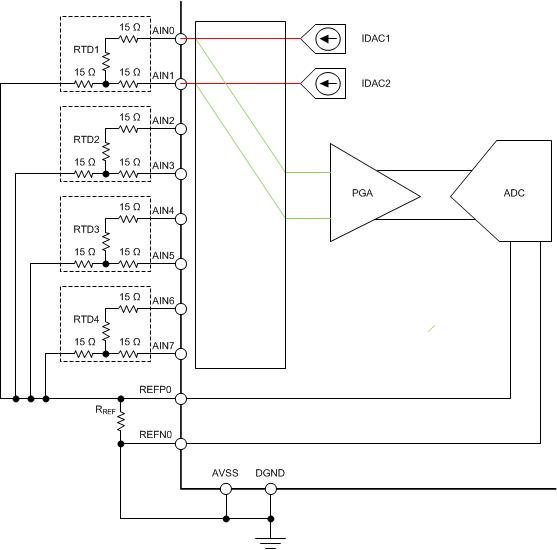Dear all,
I am trying to design a circuit for connecting 4 3-wire RTDs using ADS1248
Since the RTDs will be in a noisy environment having 5-6 meters cabling we will use RC filtering in ADC and REFERENCE inputs.
Is it possible to connect more than 2 sensors (with RC filters) to one ADS1248?
Thank you in advance!


